Engin Türetken
Optimizing IoT-Based Asset and Utilization Tracking: Efficient Activity Classification with MiniRocket on Resource-Constrained Devices
Oct 23, 2023



Abstract:This paper introduces an effective solution for retrofitting construction power tools with low-power IoT to enable accurate activity classification. We address the challenge of distinguishing between when a power tool is being moved and when it is actually being used. To achieve classification accuracy and power consumption preservation a newly released algorithm called MiniRocket was employed. Known for its accuracy, scalability, and fast training for time-series classification, in this paper, it is proposed as a TinyML algorithm for inference on resource-constrained IoT devices. The paper demonstrates the portability and performance of MiniRocket on a resource-constrained, ultra-low power sensor node for floating-point and fixed-point arithmetic, matching up to 1% of the floating-point accuracy. The hyperparameters of the algorithm have been optimized for the task at hand to find a Pareto point that balances memory usage, accuracy and energy consumption. For the classification problem, we rely on an accelerometer as the sole sensor source, and BLE for data transmission. Extensive real-world construction data, using 16 different power tools, were collected, labeled, and used to validate the algorithm's performance directly embedded in the IoT device. Experimental results demonstrate that the proposed solution achieves an accuracy of 96.9% in distinguishing between real usage status and other motion statuses while consuming only 7kB of flash and 3kB of RAM. The final application exhibits an average current consumption of less than 15{\mu}W for the whole system, resulting in battery life performance ranging from 3 to 9 years depending on the battery capacity (250-500mAh) and the number of power tool usage hours (100-1500h).
Adaptation of MobileNetV2 for Face Detection on Ultra-Low Power Platform
Aug 23, 2022
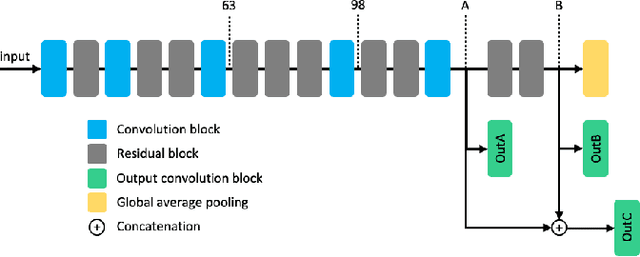
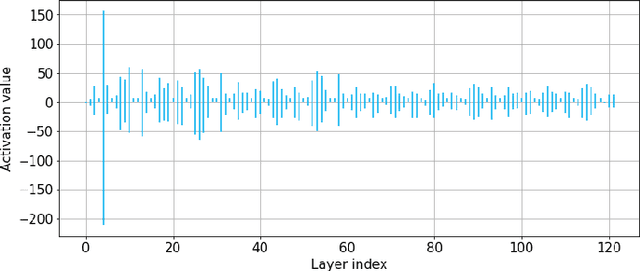
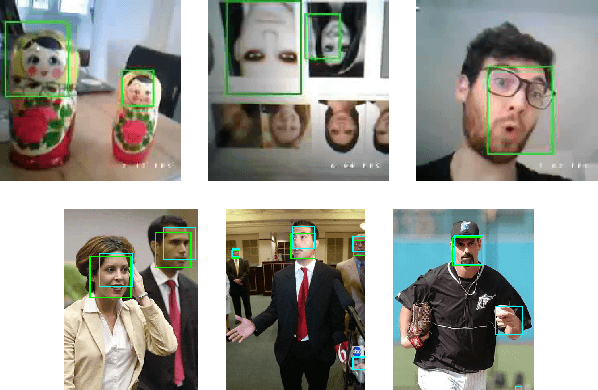
Abstract:Designing Deep Neural Networks (DNNs) running on edge hardware remains a challenge. Standard designs have been adopted by the community to facilitate the deployment of Neural Network models. However, not much emphasis is put on adapting the network topology to fit hardware constraints. In this paper, we adapt one of the most widely used architectures for mobile hardware platforms, MobileNetV2, and study the impact of changing its topology and applying post-training quantization. We discuss the impact of the adaptations and the deployment of the model on an embedded hardware platform for face detection.
Leveraging Spatial and Photometric Context for Calibrated Non-Lambertian Photometric Stereo
Mar 22, 2021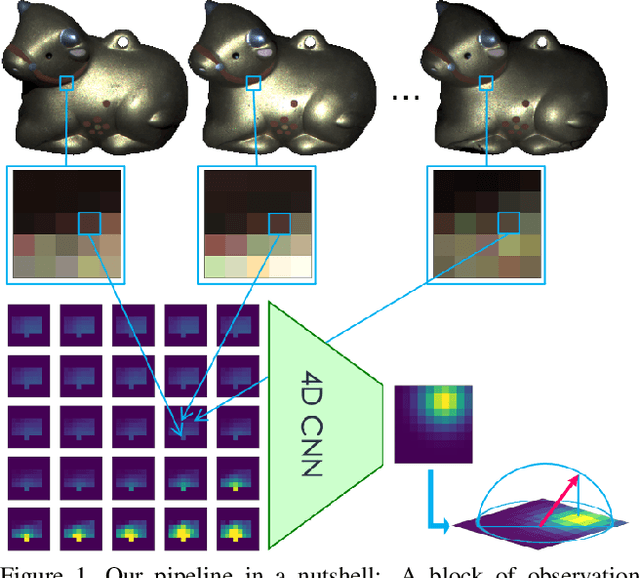

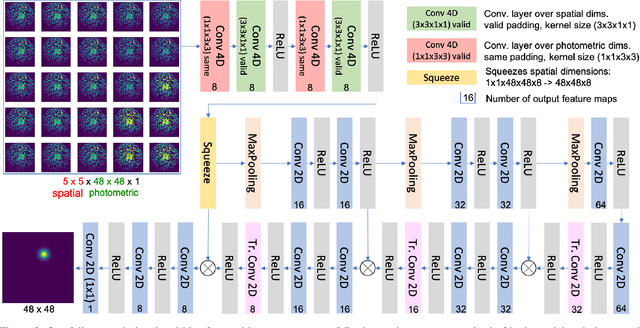
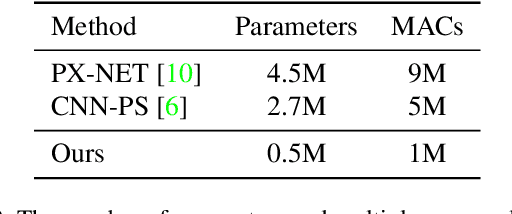
Abstract:The problem of estimating a surface shape from its observed reflectance properties still remains a challenging task in computer vision. The presence of global illumination effects such as inter-reflections or cast shadows makes the task particularly difficult for non-convex real-world surfaces. State-of-the-art methods for calibrated photometric stereo address these issues using convolutional neural networks (CNNs) that primarily aim to capture either the spatial context among adjacent pixels or the photometric one formed by illuminating a sample from adjacent directions. In this paper, we bridge these two objectives and introduce an efficient fully-convolutional architecture that can leverage both spatial and photometric context simultaneously. In contrast to existing approaches that rely on standard 2D CNNs and regress directly to surface normals, we argue that using separable 4D convolutions and regressing to 2D Gaussian heat-maps severely reduces the size of the network and makes inference more efficient. Our experimental results on a real-world photometric stereo benchmark show that the proposed approach outperforms the existing methods both in efficiency and accuracy.
Efficient Blind-Spot Neural Network Architecture for Image Denoising
Aug 25, 2020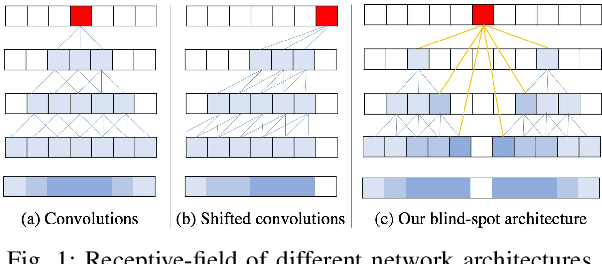
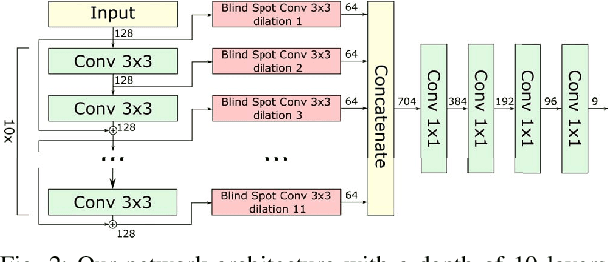
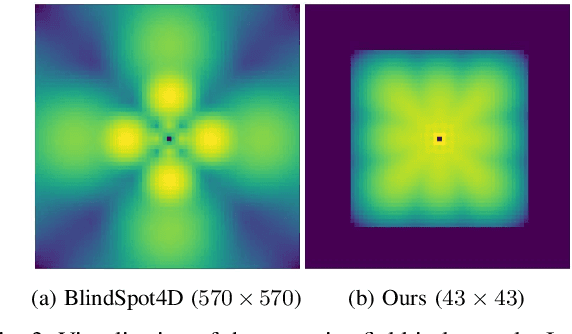
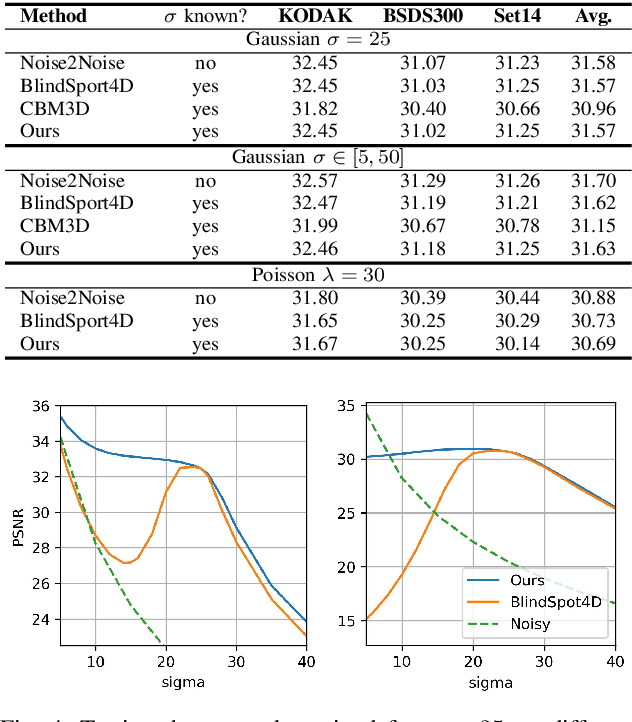
Abstract:Image denoising is an essential tool in computational photography. Standard denoising techniques, which use deep neural networks at their core, require pairs of clean and noisy images for its training. If we do not possess the clean samples, we can use blind-spot neural network architectures, which estimate the pixel value based on the neighbouring pixels only. These networks thus allow training on noisy images directly, as they by-design avoid trivial solutions. Nowadays, the blind-spot is mostly achieved using shifted convolutions or serialization. We propose a novel fully convolutional network architecture that uses dilations to achieve the blind-spot property. Our network improves the performance over the prior work and achieves state-of-the-art results on established datasets.
Embedded Deep Learning for Sleep Staging
Jun 18, 2019


Abstract:The rapidly-advancing technology of deep learning (DL) into the world of the Internet of Things (IoT) has not fully entered in the fields of m-Health yet. Among the main reasons are the high computational demands of DL algorithms and the inherent resource-limitation of wearable devices. In this paper, we present initial results for two deep learning architectures used to diagnose and analyze sleep patterns, and we compare them with a previously presented hand-crafted algorithm. The algorithms are designed to be reliable for consumer healthcare applications and to be integrated into low-power wearables with limited computational resources.
Globally Optimal Cell Tracking using Integer Programming
Jan 26, 2016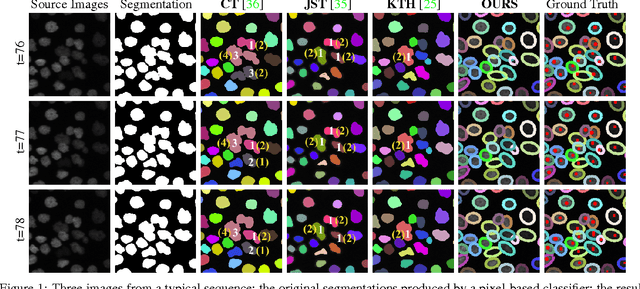
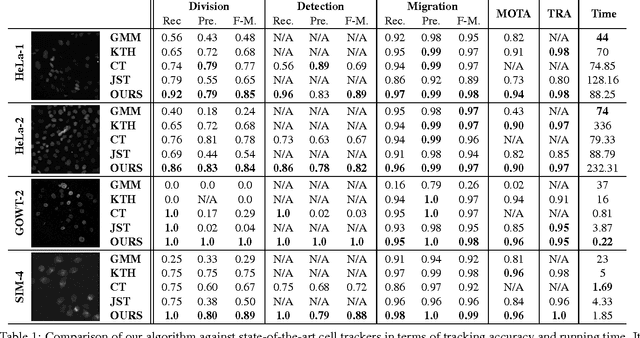
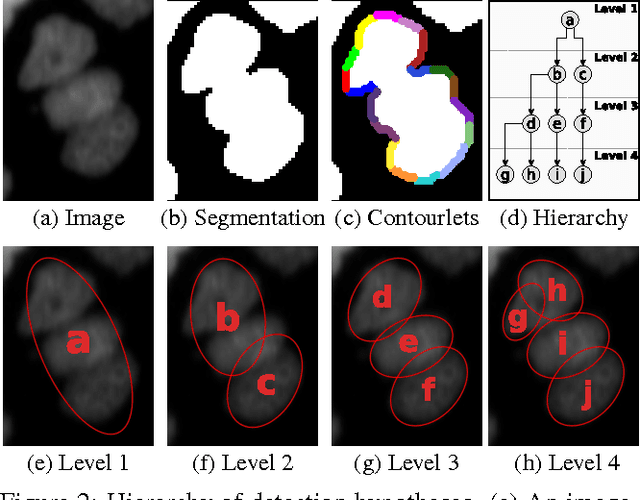
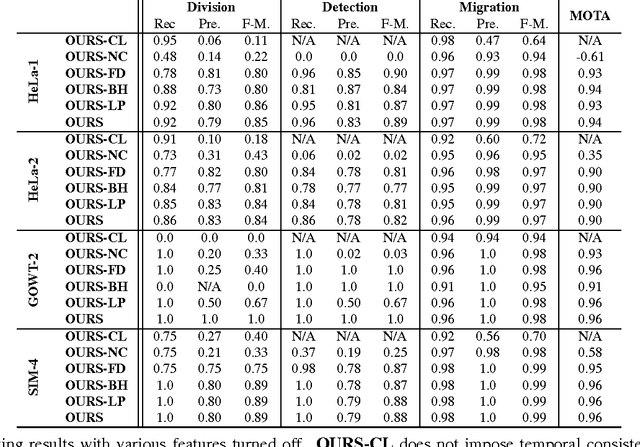
Abstract:We propose a novel approach to automatically tracking cell populations in time-lapse images. To account for cell occlusions and overlaps, we introduce a robust method that generates an over-complete set of competing detection hypotheses. We then perform detection and tracking simultaneously on these hypotheses by solving to optimality an integer program with only one type of flow variables. This eliminates the need for heuristics to handle missed detections due to occlusions and complex morphology. We demonstrate the effectiveness of our approach on a range of challenging sequences consisting of clumped cells and show that it outperforms state-of-the-art techniques.
 Add to Chrome
Add to Chrome Add to Firefox
Add to Firefox Add to Edge
Add to Edge